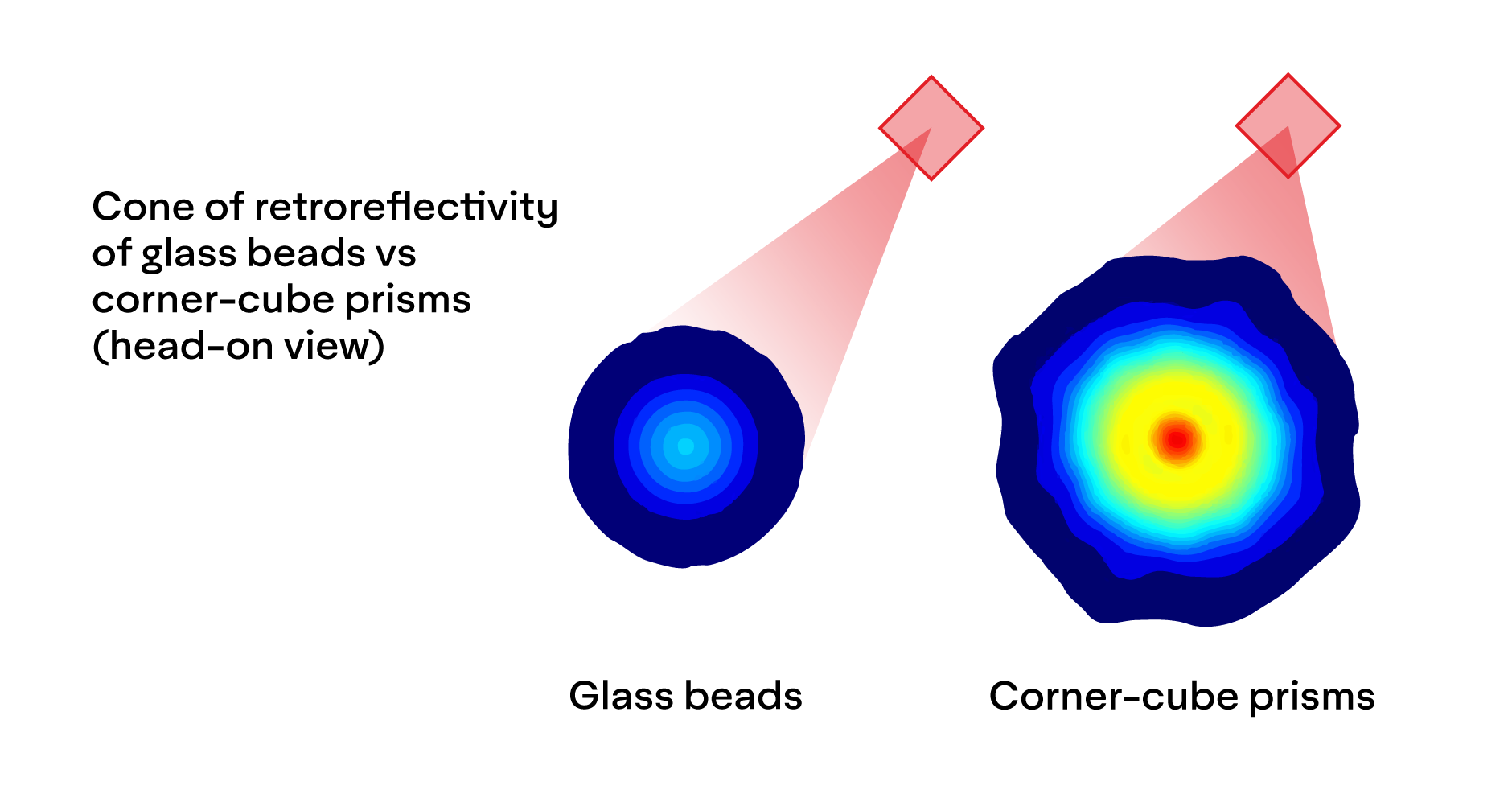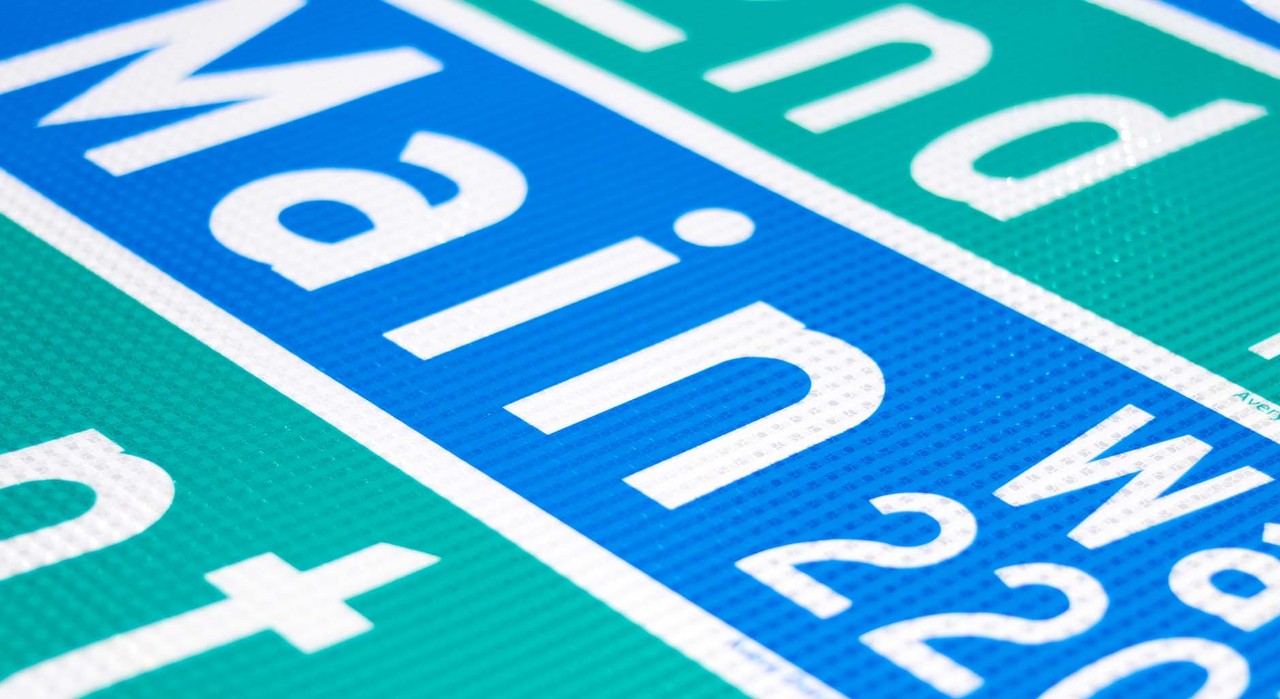Prisms
Prisms used in most standard retroreflectors look like the corner of a cube; they have three sides. This prism design is often referred to as “cube corner” or “corner cube”.

As discussed in Chapter 1, light bends when going from one optical density to a different density. When going from higher density to a lower density, such as a polymer to air, if the incident angle is right, light is bent so much that it cannot exit; this is known as total internal reflection.
In a cube corner prism, the angle between each pair of sides can be precisely controlled based on the desired performance and the material used. When light hits a side, it is reflected to another, and another, until it has been turned 180° and returned to its source. Unlike beads that leave a gap when packed together, prisms can be nested into an array, increasing overall efficiency.

Additionally, total internal reflection is a more efficient way of reflecting light as very little energy is lost through absorption or scattering.
The limitation with prisms is that they require light to hit each side within a particular angle range. Any light beyond this range will mostly transmit and is lost energy. Additionally, the outside corners of certain prisms may not be able to reflect light three times, so the light does not return to its source.
Finally, because of their asymmetrical shape, prisms do not provide as uniform of an appearance with varying viewing angles as glass beads. In general, however, prismatic products are much more efficient at retroreflecting light, meaning more of the incoming light can be returned to its source.










